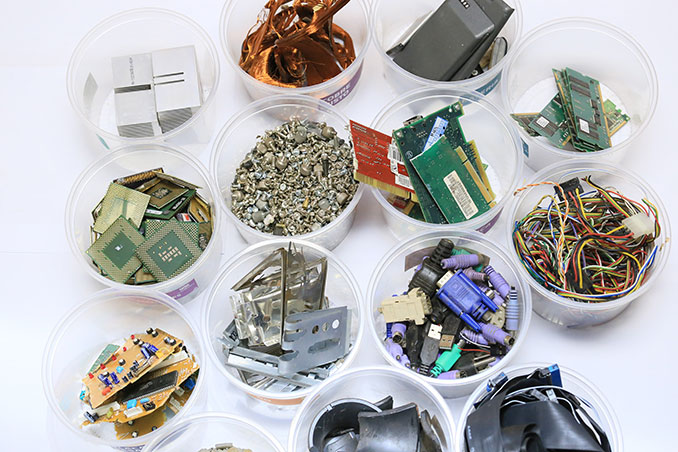Monday, October 18, 2021 6:32 pm, Posted by Absolute Destruction

In today's information age, data has become somewhat of a commodity. It is extremely valuable, especially in online and technological spaces.
Many companies use data to sell more items and services through advertising. Political organizations and campaign managers have even used data to influence political campaigns.
Even in more mundane, day-to-day applications, data is still critical. Businesses often deal with their employees' or clients' personal data for their operations.
Waterloo is currently a hotbed for tech companies and startups. They often deal with a lot of sensitive information that requires proper handling.
Despite advancements in storage technology, there will always come a time when we need to get rid of data. It may be due to storage or budget constraints or plain irrelevance.
Still, we need to handle sensitive information carefully, even during disposal. Here's what you need to know.
What Is Data & Document Destruction?
Effective data disposal requires proper data and document destruction, preferably done by professionals.
Data destruction aims to make data and documents completely unreadable regardless of format. It is an umbrella term covering many different methods appropriate to specific media. The differences in destruction methods depend on where you store your data.
Data destruction also makes sure that no one can recover the data after the process. This adds another layer of security. If you do it right, the data or documents you wish to destroy will be lost forever, unless you have backup copies.
The process can take two forms: physical or digital/electronic.
For data stored through electronic means, simply deleting your files is not enough. They may be invisible to you, but the device's hard drive still stores some information.
Data destruction can entail overwriting the current data with random information. You can do this to corrupt the file and deem it irretrievable. In some cases, you can even physically destroy the electronic devices involved. This method leaves no traces in case someone tries to recover information through the hardware.
For data stored in formats like paper, physical destruction is the way to go. The most common physical method is paper shredding. It involves a machine cutting the paper into tiny, almost illegible shreds.
Common Data & Document Destruction Methods
The emergence of different technologies has led to many ways of storing data. With this many storage options, there are also several ways of destroying them.
There is no perfect way to destroy data. After all, written information always leaves a mark. Each destruction method has its strengths and weaknesses. But getting to know each one will help you decide which way best suits your startup's needs.
Here are a few you may want to consider:
Deleting
When most people want to remove data from a computer, the most logical step is to delete it. If you're feeling thorough, you might try emptying the recycle bin.
But as we mentioned above, simple deletion is not enough. Even with the extra steps you take, anyone can still recover the files you deleted.
This is because when you delete something, you have only removed the direct link to that particular file. The information making up the data within it still exists somewhere in your hard drive.
It's a good enough method if you want to free some space. If you want actual data destruction, though, you may want to try something else.
Reformatting
For many people, reformatting a disk is a lot more effective than simple deletion. And it is. It is much harder to recover data from a reformatted device compared to when you simply delete them.
Your computer might look empty, but the data is still in the hard drive. And when you have a skilled computer technician at your disposal, data recovery is an easy task.
Easy data recovery can be good if you've changed your mind. But if your goal is data destruction, you might want to find another way. If you plan to donate your device, for example, people might find a way to access your previous files.
Wiping/Overwriting
Data wiping is another popular yet more secure method of data destruction. Like deleting and reformatting, it also does not remove the data from the disk. But what makes it secure?
The process involves completely writing over all of the data in the disk using ones and zeroes. By doing this, the device can no longer read the data. You can go through this process once or any number of times to increase security.
A technician can do this by connecting your device to a hardware bulk-wiping device. Another way to do this is by using a CD or network.
Data wiping also complies with most privacy laws, making it a popular choice for many.
Degaussing
Degaussing involves using powerful magnets to destroy data. The magnets disrupt the magnetic field of an operational electronic medium. Depending on the magnet's strength, it can destroy the majority of the drive's data.
This method effectively destroys data, but it does have some disadvantages.
If you want to reuse your device, this is not the way to go. Degaussing completely destroys the hard drive or device and renders it inoperable.
Due to this, it is almost impossible to check if the degausser has sufficiently destroyed the data. You can no longer use the device or the drive, after all. It is still possible to check using an electron microscope, but the process can be costly.
Physical destruction
Physical destruction is pretty straightforward. It's the practice of physically destroying documents and devices through various methods.
You can do this through incineration, smashing, shredding, among others. No one can recover data from a hard drive smashed into a million pieces. It's a foolproof method, but it does mean that you can no longer reuse your devices.
There are also some contentions about physical data destruction. One is that it can be pretty expensive to destroy electronics sufficiently.
Another contention is it doesn't leave much room for green or recycling practices. If you end up using physical destruction, the pieces will most likely end up in a landfill.
Shredding
Shredding is one method of physical destruction. It involves breaking or cutting devices or cards into tiny pieces.
It is also the most popular destruction method for paper documents. Since paper is a physical data storage material, it also requires physical destruction.
You can use a paper shredder to cut up documents and cards into small strips. If sustainability concerns you, you can rest a bit easier if you only need to destroy paper documents. A lot of recycling facilities readily accept shredded paper.

Reasons Why Tech Startups Need Document Shredding
Waterloo is a hotbed for tech companies and startups at the moment. Companies like Blackberry, Google, Intel, and Electronic Arts have offices in the city.
The nature of their work means they closely deal with research, development, and data. It is safe to assume that they will also need services to help them destroy documents and data.
Here's why you should avail of data destruction and document shredding in Waterloo:
Protect Confidential Data
Many businesses deal with confidential data. These may be trade secrets, employee information, or clients' personal information. It would be a massive blunder to leak all this information.
Either way, improper disposal of confidential data can harm your company. It could lead to cases of identity theft or breaches of contract. To avoid data breaches, make sure to practice regular data and document destruction.
Reduce Clutter for Increased Productivity
Studies have proven that a cluttered environment contributes to a cluttered mind. It's distracting and could slow down our daily routines, affecting productivity.
Physical document storage can eat up a lot of space in the workplace. You could store large amounts of data, but regular cleanup helps things run more smoothly. Electronic clutter also tends to slow down your devices.
Follow the Law
Canada's Personal Information Protection and Electronic Documents Act (PIPEDA) requires all businesses to protect the personal data of their clients.
You can ensure data protection through security measures and regular data destruction. The Privacy Commissioner of Canada highly recommends these practices.
Help the Environment
Many data destruction companies also ensure to recycle any potential byproducts.
Many facilities accept e-waste if you're planning to dispose of your equipment. If you opt for paper shredding, these are also easily recycled. Recycling extends the lives of these items and avoids adding more waste to landfills.
| How Do You Choose a Data Destruction Company? | |
| Certificate of Destruction | A data destruction company gives you this form as proof of thorough destruction of data. Government agencies may ask this as proof of your security practices. |
| Documentation | Make sure that the company supplies you with a complete audit of all devices and processes. |
| Compliance | Check whether the company's practices comply with PIPEDA or other data privacy standards. |
| Method | Ask about the company's methods and double-check if they coincide with government guidelines. |
| Insurance and Security | A data destruction company should have insurance in case of any mishaps. Also, study their data destruction process in detail. Are there any security risks? You can also find out if their staff had received sufficient training. |
If you’re looking for document destruction and shredding services in Waterloo, contact Absolute Destruction today!
| Pro Tip: Security threats and liabilities can come in many unexpected formats. Protect your company from a data breach by destroying your old and unwanted electronic hardware. |
Secure Document & Data Destruction With Absolute Destruction
Document and data destruction might seem like a complicated process, but it doesn't have to be.
You can never go wrong with Absolute Destruction's quality, professional service. With over twenty years of data destruction experience, you know that your data is in good hands.
We know each client and each company is unique, so we tailor our services to meet your needs. Our processes are flexible to maximize efficiency and customer care.
Our commitment is to protect your data while helping minimize your carbon footprint. We recycle all reusable materials after completing our shredding services. Protect your data with Absolute Destruction. Contact us today to know which shredding services best fit your company's needs. You can email us at info@absolutedestruction.ca or give us a call at (905) 841-0298 or (866) 997-3334 (toll-free).
FAQs on Data & Document Destruction |
| How do tech companies destroy data? |
| Tech companies can destroy data through physical or electronic means. Some of these methods include wiping, degaussing, incineration, or shredding. |
| Does Canada have a data protection act? |
| Canada has many privacy laws in place. The most prominent ones are the Privacy Act and the Personal Information Protection and Electronic Documents Act (PIPEDA). The Privacy Act applies to personal information collected by government agencies. Meanwhile, PIPEDA applies to personal information collected by private businesses. |
| What happens when a company has a data breach? |
| When a company experiences a data breach, everyone involved with them could be at risk. Their clients and employees will be highly vulnerable to identity theft. The company could also face multiple lawsuits from the victims of the breach. |

